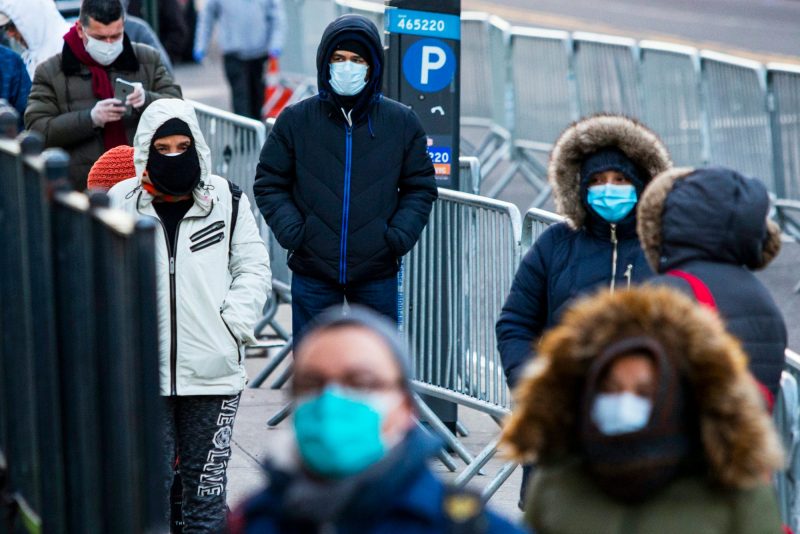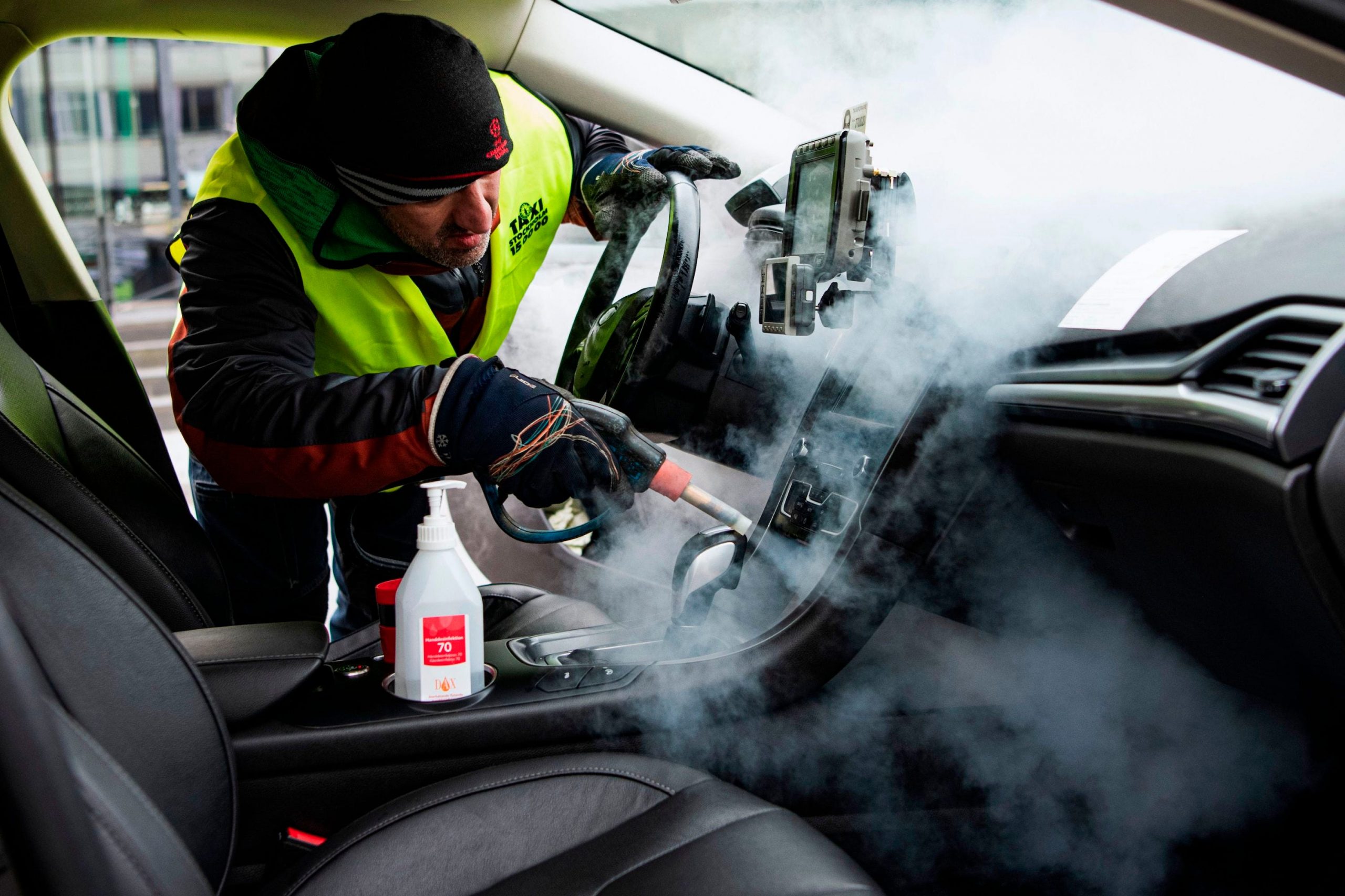- The coronavirus pandemic has infected nearly 1.3 million people around the world, and killed nearly 70,000.
- The US surpassed China and Italy on March 26 to become the country with the most confirmed cases of COVID-19, the disease caused by the novel coronavirus.
- Business Insider spoke with experts in the worlds of infectious diseases, public health, and car detailing to find out some tips people can use to lower their chances of contracting the disease when traveling by car.
- Visit Business Insider’s homepage for more stories.
The novel coronavirus has infected nearly 1.3 million people and killed nearly 70,000 worldwide, making it more important by the day to curtail the spread. One of the best ways to do that, and protect oneself in the process, is to stay home as much as possible.
But staying at home isn’t always an option, since many still need to get groceries, travel to essential jobs, and pick up medication.
Although the coronavirus landscape and what we know about the virus changes rapidly, Business Insider spoke with some experts to learn ways those traveling by car can protect themselves and others based on the information available. Those experts include Dr. Avisheh Forouzesh, an infectious-disease specialist, University of Arizona public-health and microbiology professor Charles P. Gerba, who’s earned the nickname “Dr. Germ” through his years researching germs and how to kill them, and Larry Kosilla, founder of car-detailing company Ammo NYC.
Here’s what they had to say.
1. Limit the number places you drive

Drivers should abide by regulations local health authorities have put in place to slow the spread of the virus, which often include staying put except for essential errands. The more places you go, the higher your chances are of interacting with someone or something with the virus - thus heightening the risk of bringing that into your car.
"I would advise if you are driving your own personal car to make sure you do not make too many stops along your route to help decrease the chance of exposure," Forouzesh said in an email to Business Insider.
However, "if it's just one person using it as a commuter car to go back and forth for work," then the risk of contamination is lower, Gerba said.
2. Be extra wary of what you're touching when filling up

Studies have shown that fuel pumps may carry up to 11,835 times the germs of the average public toilet seat. Forouzesh recommends wearing gloves when touching fuel pumps, keypads, and other high-touch areas at the gas station, which may not be regularly sanitized.
"If possible, try to use a contactless method of payment," Forouzesh said.
3. Limit the number of passengers you drive around

The risk of exposure also increases the more passengers travel in your vehicle.
"If it's just you in the car, it's probably not a big issue," Gerba said, but kids and other passengers make things more complicated. In his research, Gerba found that vans carry more germs than standard cars because vans typically ferry around more passengers.
Forouzesh recommends only transporting one passenger at a time, and said they should keep their distance by sitting in the back seat.
4. Wash your hands or use hand sanitizer frequently to not contaminate the inside of your car

The general-purpose recommendations for avoiding the COVID-19 virus apply to car travel as they would any other part of life.
All the experts Business Insider spoke to said to use hand sanitizer immediately after getting in your car to avoid contaminating it with germs you might have picked up when out and about.
"We are generation touch," Gerba said, underscoring the need to frequently clean one's hands. "We touch more common surfaces touched by other people than any other generation in history."
5. Disinfect your car's high-touch areas frequently

Forouzesh said to disinfect high-touch areas every time you get in and out of your car, while Gerba recommends disinfecting those spots anytime you've been out in public.
The steering wheel, interior door handle, gear-shift knob, seatbelt, radio, and cup holder are all potential hot spots for contamination and should be disinfected regularly.
6. Don't forget to disinfect your dashboard, too

The dashboard, according to Gerba, is one of the most germ-prone surfaces found inside a car.
"That's because the air goes over the top of the dashboard when it's circulating, and so the bacteria impact there a lot," Gerba said.
7. Be mindful of what you're transporting in your car, and don't just disinfect it — disinfect areas where airborne particles could land, too

Anytime you bring foreign, germ-prone objects into your car - such as laundry or groceries - there is a chance that you're bringing the novel coronavirus in with them.
Gerba said slamming a car door or a breeze could send virus-causing particles airborne, so people should disinfect high-impact zones, like the dashboard, accordingly.
8. Crack the windows to air out your car between rides

Some studies show that the novel coronavirus can live in the air for up to three hours, so leaving your car's windows open between rides for at least a few minutes a day can reduce the risk of getting sick, Forouzesh said.
9. Make sure anyone who shares the car with you takes the same precautions

Each driver should disinfect high-touch surfaces after each use, Forouzesh said.
10. For best results, clean high-touch areas with soap before disinfecting them, as per the CDC's guidelines

For Kosilla, founder of car-detailing company Ammo NYC, eliminating the coronavirus from a car's interior is anything but a typical detailing job. For individual car owners concerned about the coronavirus, the company also put out an in-depth YouTube video on how they can clean and disinfect their vehicle's interior.
Kosilla said to follow the guidelines from the Centers for Disease Control and Prevention to clean, then disinfect, when approaching any surface in your car. By cleaning with your preferred car soap, Kosilla said, "you remove the contaminants that are just basic stuff on top - dirt, junk, gunk, grossness, sweat, oil - so that the other tools can do their job."
Attempting to disinfect without removing surface grime essentially dilutes the effectiveness of even the best disinfectant, Kosilla said.
11. Keep disinfecting wipes in your car, as they're often used more effectively than sprays

Any EPA-approved disinfecting wipe or spray should do the trick when used according to the directions on the package. Both Kosilla and Gerba said letting a disinfectant sit on a contaminated surface for a sufficient period of time - the "dwell time" - is essential for properly killing germs in a car.
Gerba recommends using disinfecting wipes and keeping a box in your car for easy access. In his research, Gerba found that wipes were "orders of magnitude" more effective at eliminating bacteria in homes, because when people use sprays, they don't let them sit on the surface long enough to fully take effect.
12. Avoid damaging your car's interior by using the proper products

Lots of products will kill the novel coronavirus on surfaces, but not all of them are safe to use on a vehicle's interior. If you use a bleach-based disinfectant, Kosilla said, you would "definitely win the battle, but you'd also have a white interior, whether you like it or not."
Kosilla recommends testing disinfectant on a small, inconspicuous area, and repeating that test on the high-touch spots in your car. Then, observe if the disinfectant causes any discoloration before letting the product sit for the full recommended dwell time.
Kosilla said to be especially careful when dealing with high-end interiors, as they typically include a wider variety of materials and more supple leathers that are prone to fading.
13. Try to avoid ride-shares, but take extra precautions if they're necessary

To reduce the number of exposures, Forouzesh said to "try to minimize the use of ride sharing such as Uber and Lyft unless absolutely necessary."
If you need to take a ride-share for some reason, use hand sanitizer after getting out and do not touch your fingers to your face before doing so, Gerba added.
Gerba also said that in order to protect themselves and their passengers from the novel coronavirus, drivers for ride-sharing companies should provide hand sanitizer to passengers and should disinfect their back seat each day.
14. Above all, follow the latest guidelines set forth by the WHO, CDC, and your local health authorities

We learn more about COVID-19 and the virus that causes it by the day, so it's important to keep up with the latest guidelines on combatting its spread. That can be done by paying attention to the CDC, the World Health Organization, and your local health authorities.

